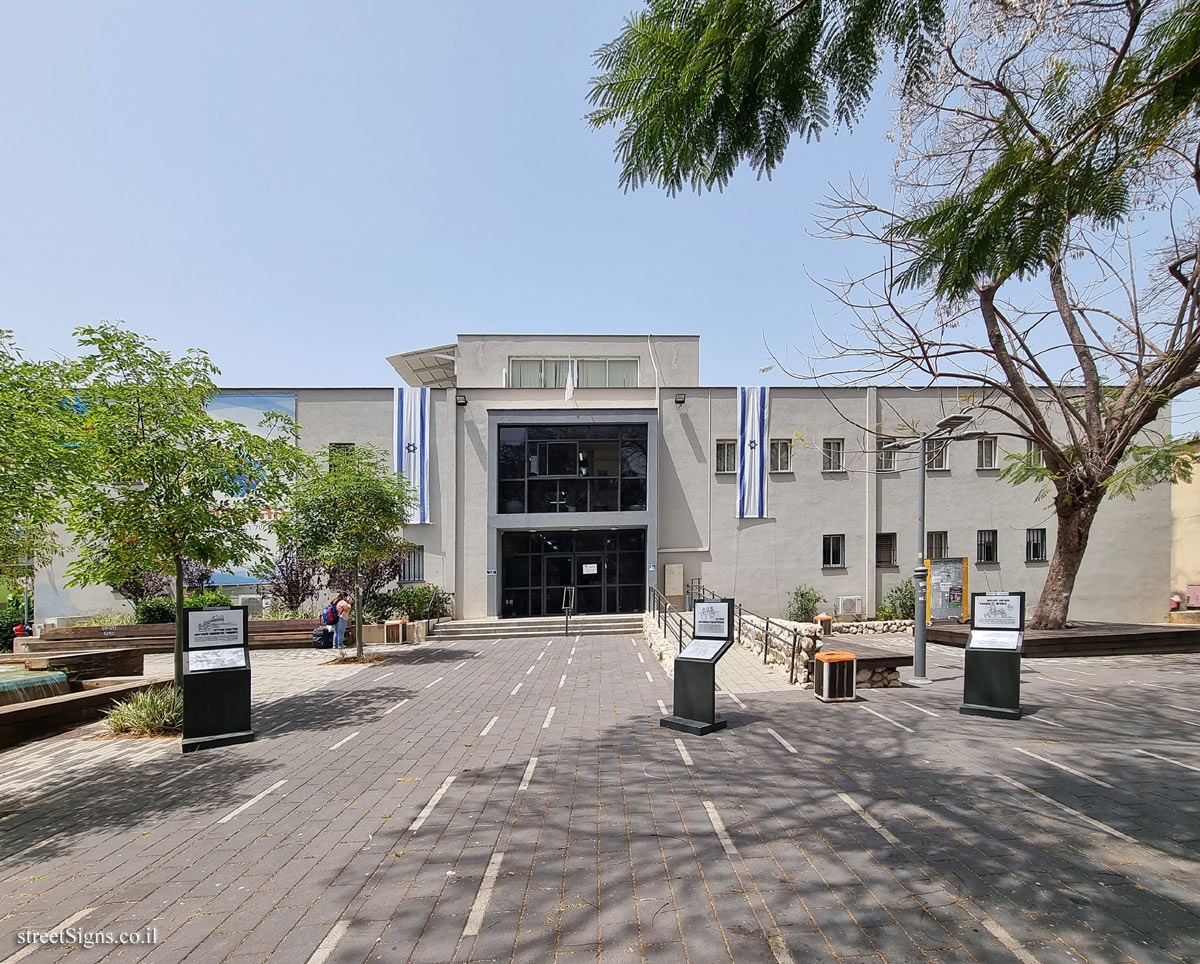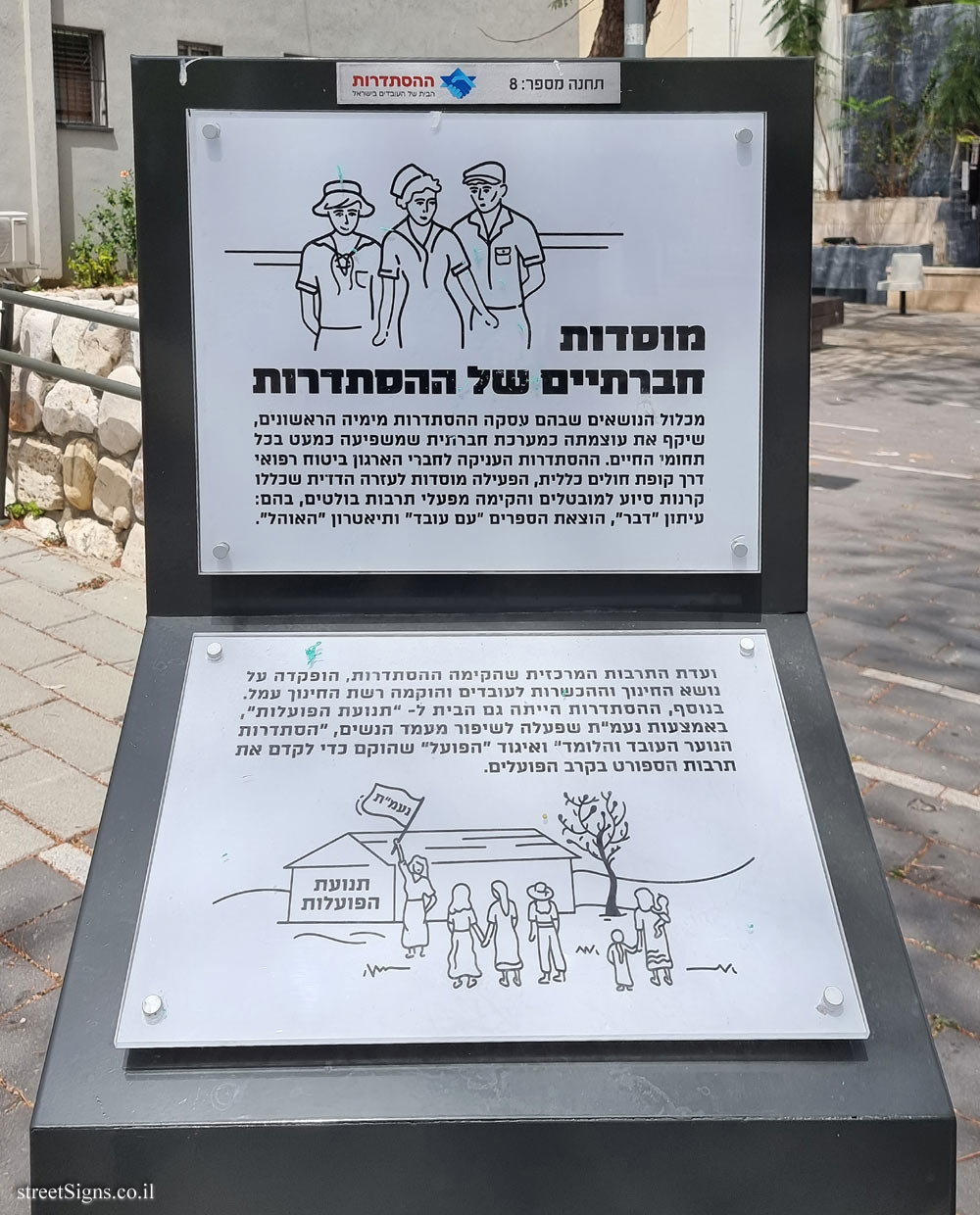One of the stations in the Histadrut Garden in Rishon Lezion, inaugurated in July 2020, with signs marking milestones in the history of the Histadrut.
The illustrations at the trail stations were made by Nofar Tzarfati.
A broad view of some of the stations was taken that day by the same photographer
 Click for a larger image
Click for a larger image Three months later, it was inaugurated in Tel Aviv next to the Histadrut building, the Histadrut Garden, with the Youth Movements Trail, which contains the same signs with the same text and illustrations (but the signs are made of stone and are on the ground)
 Click for sign's details Translation of the text on the sign
Click for sign's details Translation of the text on the sign:
Station number: 8
Symbol of the Histadrut - the home of workers in Israel
Social institutions of the Histadrut The range of issues that the Histadrut dealt with from its earliest days reflected its power as a social system that affects almost all areas of life. The Histadrut provided medical insurance to members of the organization through Clalit Health Fund, operated mutual aid institutions that included aid funds for the unemployed, and established prominent cultural enterprises, including: "Davar" newspaper, "Am Oved" publishing house and the "Ohel" theater.
The Central Culture Committee established by the Histadrut was entrusted with the issue of education and training for workers, and the Amal Education Network, in addition, the Histadrut was also home to the working women movement, through NAMAT, which worked to improve the status of women, the Histadrut of "HaNoar HaOved VeHaLomed" (Working and Learning Youth), and the Hapoel Association, which was established to promote sports culture among the workers.
Learn about:


 Click for a larger image
Click for a larger image  Click for sign's details
Click for sign's details